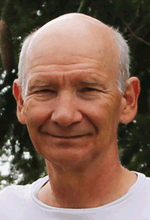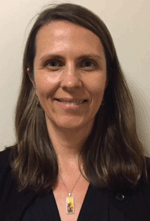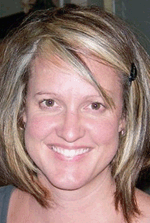Unravelling the Triassic Mungaroo Formation within North Carnarvon Basin using Regional Stratal Slice Volumes
Tony Marsh A E , Bill Kowalik B , Rhonda Welch C , Anne Powell A , Heidi Howe D and Bill Hallager AA Chevron Australia Pty Ltd, 250 St Georges Terrace, Perth, WA 6000, Australia.
B Chevron, Retired, Earth Science Consultant, 740 NE 3rd Street #3-351, Bend, OR 97701, USA.
C Chevron, Houston, 1500 Louisiana Street, Houston, TX 77002, USA.
D Independent Consultant, 250 St Georges Terrace, Perth, WA 6000, Australia.
E Corresponding author. Email: TMarsh@chevron.com
The APPEA Journal 58(2) 833-838 https://doi.org/10.1071/AJ17232
Accepted: 22 February 2018 Published: 28 May 2018
Abstract
Chevron has developed a new method for viewing, rendering and interpreting multiple, proportionally-flattened seismic surveys (US patent). The products of this method are referred to as Regional Stratal Slice Volumes (RSSVs). Within the Northern Carnarvon Basin (NCB), local RSSVs contain a patchwork of 22 3D seismic surveys covering an area of approximately 68 000 km2 and comprising a 4+ km-thick succession of alluvial to shallow-marine deposits of the Late Triassic Mungaroo Formation. Seismic slices for each constituent volume were spliced together, correlated with adjacent volumes and combined with supporting structural, cultural and well-based data. This has created a temporal series of unbroken, regionally-extensive, seismic snapshots which, when viewed successively, capture the evolving geomorphology and palaeogeography of the basin from east of Gorgon and Wheatstone out to the Exmouth Plateau.
Through the integration of the RSSVs and well data, the shoreline and marginal marine to non-marine transitions were identified and accurately mapped at an approximately 20 m vertical spacing throughout the Mungaroo Formation. This work resulted in an in-depth understanding of changing depositional environments at a regional scale. Observed, temporally-systematic fluctuations of the shoreline on the RSSVs provide a highly predictive stratigraphic framework for the basin. Additionally, RSSVs have been used to provide insight into regional NCB studies and to support localised prospect and field scale evaluations. Over the past three years, RSSVs combined with automatically generated closures have been used to identify significant additions to Chevron’s prospect portfolio.
Keywords: maximum flooding surface (mfs), sequence boundary (sb), transgressive surface (ts).

Tony Marsh holds a B.Sc. and M.Sc. degrees in geology from the University of Texas at San Antonio. He has worked in the oil and gas industry for 24 years, 15 years with Paradigm Geophysical and the past 9 years with Chevron’s Australian Business Unit in Perth, Australia. While at Paradigm, Tony held various positions including product management of Paradigm’s visualisation and interpretation portfolio, regional geophysicist in Asia Pacific region and technical director, USA. At Chevron, Tony has worked on various basin-scale exploration projects within the regional exploration team focusing on stratigraphic imaging. He is a member of PESA and SEG. |

Bill Kowalik holds degrees in geology from the University of Pittsburgh (B.Sc.), Pennsylvania State University (M.Sc.) and Stanford University (Ph.D.). He retired in 2017 from Chevron as an Earth Science Consultant after 35 years, the last 8 years in Perth. At Chevron, Bill participated in the development, deployment and application of various technologies, including exploration by remote sensing and the enhancement, creative display and interpretation of seismic data. He currently works as an earth science consultant from Bend, OR, USA. He is a member of SEG, AAPG, EAGE and GSA. |

Rhonda Welch holds B.S. and M.S. degrees in Geological Sciences from Virginia Tech and a Ph.D. in Geology from James Cook University. She has 17 years of experience with Chevron specialising in regional-scale geology, clastic stratigraphy and stratigraphic visualisation techniques. Her work has focused on multiple basins from around the world. She currently leads the Seismic Stratigraphy Interpretation Team within Chevron’s Energy Technology Company and is a member of AAPG and the Houston Geological Society. |

Anne Powell completed a B.Sc. (Hons.) degree at the University of Melbourne in 2002 and has worked in the oil and gas industry for 14 years. Her honours project focused on velocity controls within Cenozoic carbonates of the Dampier Sub-basin. From 2003 to 2004, she worked for the DPI Basin Studies Group, then worked as a Melbourne based exploration geologist (2004–2010). For the past 7 years, she has worked as an Exploration Geologist on the Chevron ABU Regional Exploration Team with a focus on stratigraphy. She is a member of AAPG and PESA. |

Heidi Howe completed a B.Sc. (Hons.) degree in Geology from the University of Western Australia where she researched Late Triassic palynostratigraphy as part of her honours thesis and then went on to research Albian/Aptian dinocysts from the Southern Carnarvon Basin. Heidi joined Chevron in 2006 as a biostratigrapher working in the Global Technology Company in Houston and later in Perth. Heidi is currently an independent biostratigraphy consultant. She is a member of AASP and GSA. |

Bill Hallager completed a B.A. degree in Geology from Dartmouth College, USA and a Ph.D. from University of California Berkeley. Bill worked for Anaconda and Homestake Mining Companies before joining Chevron in 1982. Bill started work at Chevron at the Chevron La Habra upstream research laboratory, then worked in international exploration and development roles in Nigeria, Kazakhstan, Canada, California and Australia. Bill retired from Chevron in December 2017 from a role as Manager of Regional Exploration for Chevron’s Australia Business Unit. Bill is a member of AAPG and PESA. |
References
Marshall, N., and Lang, S. (2013). A new sequence stratigraphic framework for the North-West Shelf, Australia. In ‘The Sedimentary Basins of Western Australia IV: Proceedings of the Petroleum Exploration Society of Australia Symposium, Perth, WA, 2013.’ (Eds M. Keep and S.J. Moss).Payenberg, T., Howe, H., Marsh, T., Sixsmith, P., Kowalik, W., Powell, A., Ratcliffe, K., Iasky, I., Allgoewer, A., Howe, R., Montgomery, P., Vonk, A., and Croft, M. (2013). An integrated regional Triassic stratigraphic framework for the Carnarvon Basin, NWS, Australia. In ‘The Sedimentary Basins of Western Australia IV: Proceedings of the Petroleum Exploration Society of Australia Symposium, Perth, WA, 2013.’ (Eds M. Keep and S.J. Moss).


